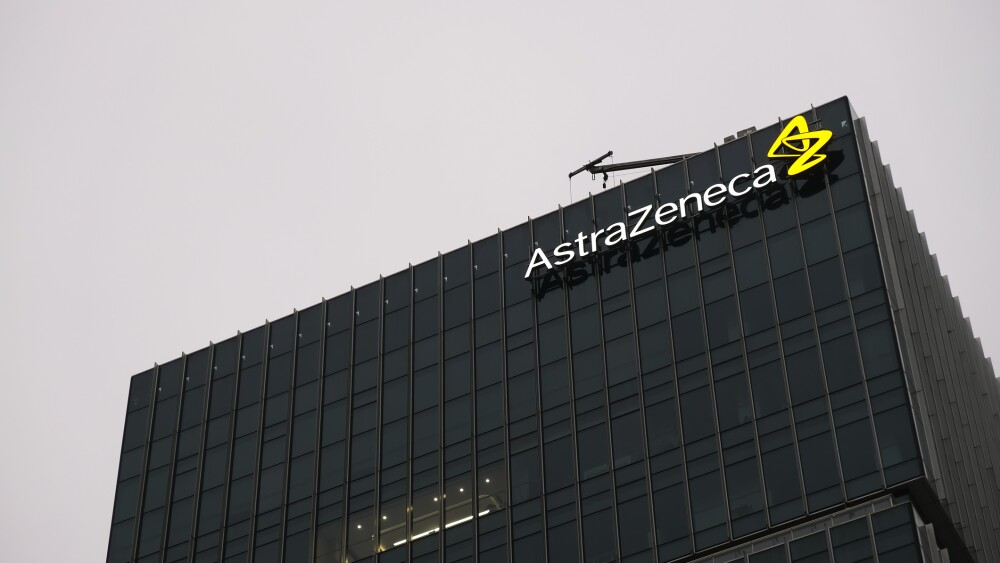Hypoplastic Left Heart Syndrome Market Outlook 2025-2035:
The 7 major hypoplastic left heart syndrome market are expected to exhibit a CAGR of 8.8% during 2025-2035. The Hypoplastic Left Heart Syndrome (HLHS) market is driven by the increasing adoption of advanced minimally invasive and catheter-based treatment options, such as hybrid procedures and interventional cardiology techniques, which effectively manage the condition while reducing surgical trauma and recovery time. These innovative approaches are particularly beneficial in stabilizing patients, improving blood flow, and optimizing heart function during the critical early stages of life. Hybrid procedures combine surgery with catheter intervention, thereby significantly reducing the dependency on traditional open-heart surgeries with improved outcomes and reduced hospital stay. Such advancements offer more effective treatment, increased survival chances of the patients, and enhanced quality of life. Therefore, they appeal to both health care professionals and families seeking state-of-the-art methods of managing this complex congenital heart defect.
Advances in Early Detection and Diagnostic Technologies: Driving the Hypoplastic Left Heart Syndrome Market
Advancements in modern diagnostics and treatments have significantly improved patient management and outcomes for Hypoplastic Left Heart Syndrome. Cutting-edge imaging technologies such as fetal echocardiography and 3D cardiac MRI enable accurate early diagnosis. Thus, detailed treatment planning is supported even before delivery. In addition, innovations in diagnostics such as genetic testing and biomarker analysis aid in identifying genetic disorders that accompany HLHS and predict the outcomes of surgical intervention. Another molecular diagnostic used more and more for the purpose of exploring genetic etiology for congenital heart defects is next-generation sequencing (NGS), paving the way for personalized approaches of treatment. Artificial intelligence adoption in imaging and diagnostics further propels accuracy in identifying cardiac anomalies and automates functional assessments in favor of reducing subjective assessments based on data. Moreover, minimally invasive therapies, including hybrid procedures that combine catheter-based techniques with surgical interventions, have become game-changers in offering faster recovery and less surgical trauma while improving survival rates. Wearable cardiac monitoring devices that deliver real-time heart function insights are also gaining importance in outpatient care, enabling swift detection of complications and personalized treatment adjustments. These technologies are especially helpful for patients in remote or underserved areas, ensuring timely care and better long-term outcomes. Telemedicine also plays a vital role in expanding access to pediatric cardiology services through virtual consultations, follow-up care in the postoperative period, and treatment guidance. These innovations therefore reduce hospitalization time, contribute to better clinical outcomes, and improve the general quality of life for patients as well as families.
Request a PDF Sample Report: https://www.imarcgroup.com/hypoplastic-left-heart-syndrome-market/requestsample
Development of Novel Therapies and Pharmacological Treatments: Contributing to Market Expansion
The Hypoplastic Left Heart Syndrome (HLHS) market is moving ahead with the evolution of new innovative therapies and advanced pharmacological treatments for bettering patient outcomes. New pharmacological agents, novel cardiovascular drugs, and adjunctive therapies are being created to enhance cardiac function, decrease complications, and provide long-term management of this condition. Such therapies provide better effectiveness, fewer adverse effects, and targeted mechanisms of action, and thus, more satisfied patients as well as a better clinical outcome. Biological therapy research is also increasingly expanding, specifically in the context of complex chronic conditions associated with HLHS. Among these are monoclonal antibodies for inflammatory pathways, such as cytokines like interleukin-6 and tumor necrosis factor-alpha, that can limit inflammation and tissue damage and thus improve cardiac remodeling and recovery post-surgery. Delivery systems for drugs, which include liposomal formulations, hydrogels, and nanotechnology-based carriers, are revolutionizing treatment through localized delivery of drugs to the heart and tissues surrounding it. These systems will deliver higher therapeutic concentrations to the target site and minimize systemic exposure and adverse effects. Innovative adjunct treatments also include therapies based on stem cells with regenerative approaches that enhance myocardial function and aid tissue repair. The integration of combination therapies that blend anti-inflammatory agents with cardiac support medications also aims to address the multi-dimensional pathophysiology seen in HLHS. Ease of administration and a patient-centered approach underlie the growing trends of non-invasive pharmaceutical solutions, including novel formulations of cardioprotective agents. Advancements in this area, combined with personalized treatment strategies, are propelling the HLHS market forward and opening up chances for improved outcomes in this complex condition.
Buy Full Report: https://www.imarcgroup.com/checkout?id=12552&method=809
Emerging Therapies in Hypoplastic Left Heart Syndrome Market
Longeveron Mesenchymal Stem Cells: Longeveron
Longeveron Mesenchymal Stem Cells (LMSCs) are being explored as a regenerative therapy for Hypoplastic Left Heart Syndrome (HLHS). These stem cells aim to promote cardiac tissue repair, improve heart function, and enhance ventricular performance following surgical interventions, offering a promising adjunct to traditional treatments.
JRM 001: Gene Techno Science
JRM-001 is an investigational autologous cardiac stem cell therapy under evaluation for treating Hypoplastic Left Heart Syndrome (HLHS). A multicenter, randomized, single-blind, parallel-group study is assessing its efficacy and safety in pediatric patients with congenital heart disease following reconstructive surgery.
Drug Name | Company Name | MOA | ROA |
Longeveron Mesenchymal Stem Cells | Longeveron | Cell replacements | Intramyocardial injections |
JRM 001 | Gene Techno Science | Cell replacements | Intravenous |
Detailed list of emerging therapies in Hypoplastic Left Heart Syndrome is provided in the final report…
Leading Companies in the Hypoplastic Left Heart Syndrome Market:
The market research report by IMARC encompasses a comprehensive analysis of the competitive landscape in the market. Across the global Hypoplastic Left Heart Syndrome market, several leading companies are at the forefront of developing integrated platforms to enhance the management of Hypoplastic Left Heart Syndrome. Some of the major players include Longeveron, Gene Techno Science, and others. These companies are driving innovation in the Hypoplastic Left Heart Syndrome market through continuous research, diagnostic tools, and expanding their product offerings to meet the growing demand for Hypoplastic Left Heart Syndrome.
In February 2024, The FDA has granted Orphan Drug Designation (ODD) to rexlemestrocel-L (Revascor; Mesoblast Limited) following positive results from a randomized controlled trial in children with Hypoplastic Left Heart Syndrome (HLHS). This designation comes after rexlemestrocel-L received Rare Pediatric Disease Designation in January 2024.
Key Players in Hypoplastic Left Heart Syndrome Market:
The key players in the Hypoplastic Left Heart Syndrome market who are in different phases of developing different therapies are Longeveron, Gene Techno Science, and Others.
Regional Analysis:
The major markets for Hypoplastic Left Heart Syndrome include the United States, Germany, France, the United Kingdom, Italy, Spain, and Japan. According to projections by IMARC, the United States has the largest patient pool for Hypoplastic Left Heart Syndrome while also representing the biggest market for its treatment. Novel treatments have recently emerged in the Hypoplastic Left Heart Syndrome (HLHS) market, with advancements in stem cell therapy, gene editing, and regenerative medicine offering more precise and targeted management options. Innovations like autologous cardiac stem cells, tissue-engineered cardiac patches, and next-generation pharmaceuticals are designed to address key challenges associated with HLHS, including heart function restoration, tissue repair, and post-surgical complications, thereby enhancing long-term outcomes.
Recent advancements in diagnosis tools and methods, such as fetal cardiac MRI, advanced echocardiography, and genetic screening, are leading to early and accurate diagnoses of HLHS. This promotes timely and appropriate management strategies with the least adverse complications and undesirable events. Other factors driving growth in the HLHS market are regulatory advancements, increased investments in research and development (R&D), and enhanced collaborations among pharmaceutical companies, medical device manufacturers, and research institutions. Moreover, AI diagnostic solutions and telehealth platforms further expand access to highly specialized care even in remote areas and underserved regions, with consultation and follow-up care becoming timely. Regions such as North America and Europe continue to lead the market, mainly as a result of cutting-edge research and technology, while emerging regions are rapidly adopting novel treatments. The integration of advanced therapies and diagnostic innovations is propelling the global HLHS market toward sustained growth and improved patient care.
Recent Developments in Hypoplastic Left Heart Syndrome Market:
· In October 2024, Longeveron announced positive long-term transplant-free survival data from a multi-year follow-up study of the ELPIS I Phase 1 clinical trial. This open-label Phase 1 trial evaluated the safety of Lomecel-B in patients with Hypoplastic Left Heart Syndrome (HLHS). Participants underwent the Glenn Procedure, a type of open-heart surgery, at around 4 to 5 months of age. The ELPIS I trial successfully met its primary safety endpoint, with all patients remaining alive, transplant-free, and maintaining expected growth rates one year after treatment. To assess long-term survival outcomes, all ELPIS I patients (n=10, 7 males, 3 females) were monitored for five years post-Glenn surgery and Lomecel-B treatment. The results were compared with historical data from the Single Ventricle Reconstruction (SVR) Trial, which included patients receiving the same shunt type during the Stage I (Norwood) operation and subsequent Glenn procedures.
· In August 2024, Longeveron announced the US FDA has granted Fast Track Designation (FTD) to Lomecel-B for the treatment of Hypoplastic Left Heart Syndrome (HLHS).
Key information covered in the report.
Base Year: 2024
Historical Period: 2019-2024
Market Forecast: 2025-2035
Countries Covered
- United States
- Germany
- France
- United Kingdom
- Italy
- Spain
- Japan
Analysis Covered Across Each Country
- Historical, current, and future epidemiology scenario
- Historical, current, and future performance of the Hypoplastic Left Heart Syndrome market
- Historical, current, and future performance of various therapeutic categories in the market
- Sales of various drugs across the Hypoplastic Left Heart Syndrome market
- Reimbursement scenario in the market
- In-market and pipeline drugs
Competitive Landscape:
This report offers a comprehensive analysis of current Hypoplastic Left Heart Syndrome marketed drugs and late-stage pipeline drugs.
In-Market Drugs
- Drug Overview
- Mechanism of Action
- Regulatory Status
- Clinical Trial Results
- Drug Uptake and Market Performance
Late-Stage Pipeline Drugs
- Drug Overview
- Mechanism of Action
- Regulatory Status
- Clinical Trial Results
- Drug Uptake and Market Performance
Ask Our Expert & Browse Full Report with TOC & List of Figure: https://www.imarcgroup.com/hypoplastic-left-heart-syndrome-market/toc
IMARC Group Offer Other Reports:
Primary Immune Deficiency Market: The 7 major primary immune deficiency markets reached a value of US$ 5.7 Billion in 2023. Looking forward, IMARC Group expects the 7MM to reach US$ 9.4 Billion by 2034, exhibiting a growth rate (CAGR) of 4.61% during 2024-2034.
Myofascial Pain Syndromes Market: The 7 major myofascial pain syndromes markets are expected to exhibit a CAGR of 2.69% during 2024-2034.
Atrial Flutter Market: The 7 major atrial flutter markets are expected to exhibit a CAGR of 4.56% during 2025-2035.
Ventricular Fibrillation Market: The 7 major ventricular fibrillation markets reached a value of US$ 6.4 Billion in 2023. Looking forward, IMARC Group expects the 7MM to reach US$ 11.8 Billion by 2034, exhibiting a growth rate (CAGR) of 5.71% during 2024-2034.
Pulmonary Embolism Market: The 7 major pulmonary embolism markets reached a value of US$ 1.8 Billion in 2023. Looking forward, IMARC Group expects the 7MM to reach US$ 3.3 Billion by 2034, exhibiting a growth rate (CAGR) of 5.58% during 2024-2034.
Down Syndrome Market: The 7 major down syndrome markets reached a value of US$ 1.2 Billion in 2024. Looking forward, IMARC Group expects the 7MM to reach US$ 3.8 Billion by 2034, exhibiting a growth rate (CAGR) of 10.91% during 2024-2034.
Contact US
IMARC Group
134 N 4th St. Brooklyn, NY 11249, USA
Email: Sales@imarcgroup.com
Tel No:(D) +91 120 433 0800
Phone Number: - +1 631 791 1145, +91-120-433-0800






